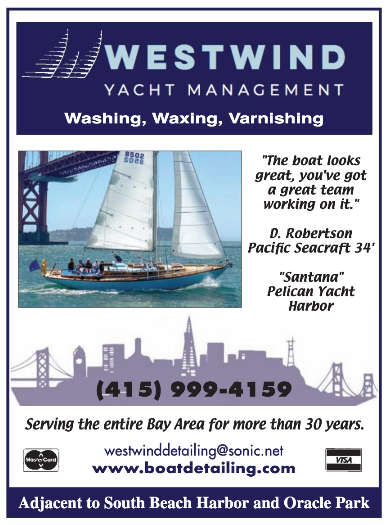
‘Latitude 38’ June Issue Out Now!
Welcome to the June issue! If you haven’t picked one up yet or it’s in the mail, here’s a peek at what’s inside this month — it’s a racey one!
2023 Transcpac
On June 24, under the big guns of USS Iowa, the fastest guns in the West Coast sailing fleet will gather for the Aloha send-off party marking 95 years since the inaugural voyage of the legendary Transpac Race. Andy Schwenk gives us a taste of life aboard during the 2000+ nautical-mile race.
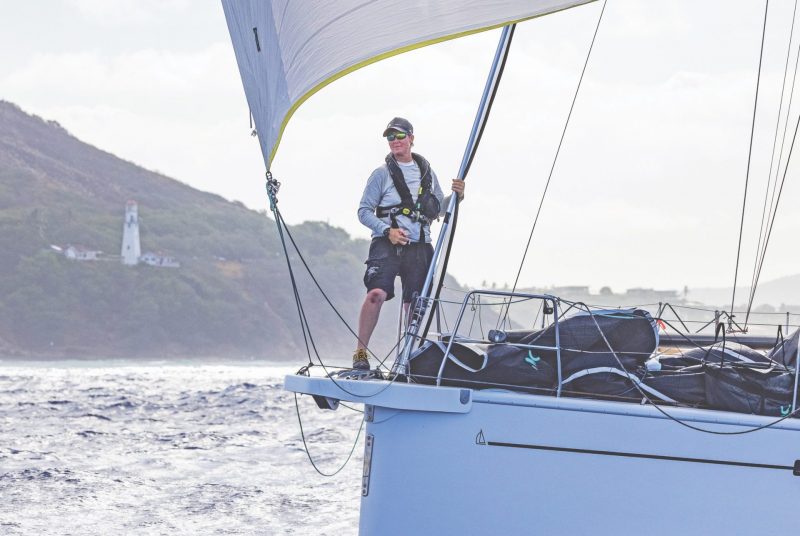
Singlehanded Transpacific Yacht Race
The Singlehanded Sailing Society’s Singlehanded Transpacific Yacht Race will start on June 25 in front of Golden Gate Yacht Club on the San Francisco Cityfront. A couple of weeks later, the fleet of solo sailors will sail into gorgeous Hanalei Bay on the north shore of Kauai, Hawaii’s Garden Isle. This month we profile the sailors who will be competing in the race.
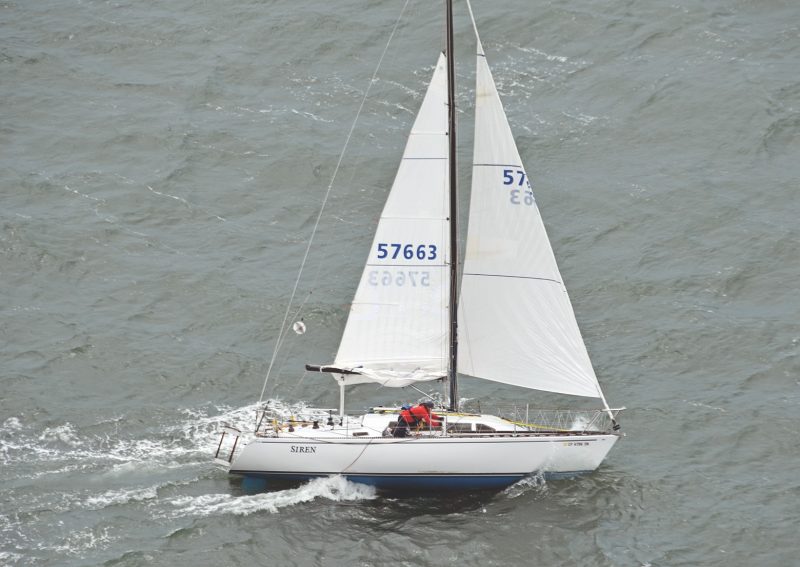
We also share a wrap-up of last month’s Great Vallejo Race.
Saturday morning, May 6, dawned with sprinkles and squalls, which would continue through the hour of starts for the Great Vallejo Race on the Berkeley Circle. “It’s just like the Pacific Northwest out here!” quipped one drizzle-dampened sailor. “It’s just like Hanalei!” observed another, when one of several squalls upped the hydrologic factor.
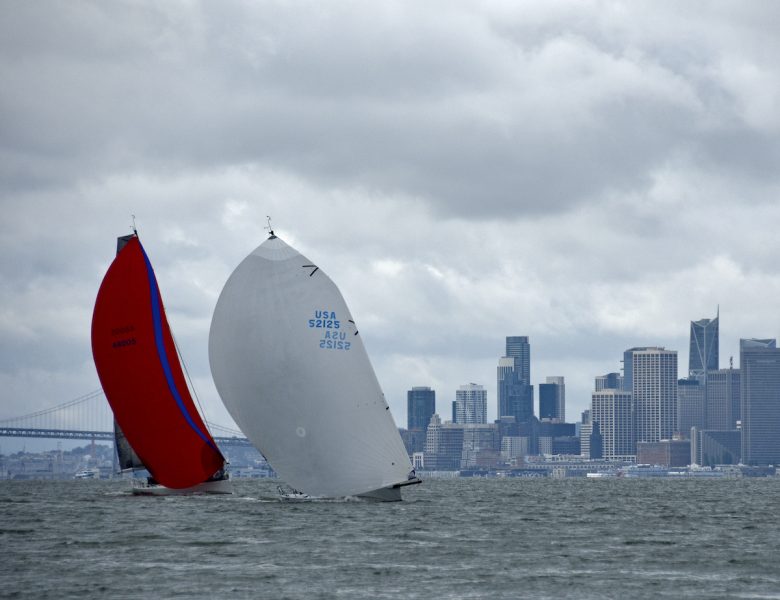
In other news:
Australia Completes the SailGP Trifecta
There was a brief moment for a little drama at the end of the final podium race as New Zealand made a last-ditch attempt at a miracle pass after a slight hiccup from the Aussies briefly opened the door for the lead. But it was shut just as quickly, as Tom Slingsby and company completed their SailGP Championship trifecta, three-peat, hat trick — whatever you want to call it — to dominate the high-speed catamaran foiling seascape again.
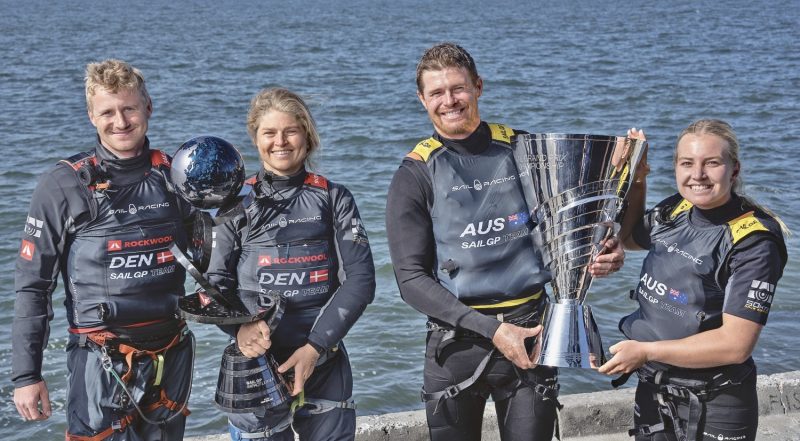
On March 13, 2023, with a fair weather forecast and weeks’ worth of provisions, the Westsail 43 Niniwahuni motored out of La Cruz, Mexico, and headed west to cross the Pacific. Destination: French Polynesia. Her crew, Shawna and Travis Nicolet, and their three children, 7-year-old Bas, Kyuss, aged 5, and Tiago, 4 months, were embarking on their dream voyage, years in the making. Two weeks later, the family found themselves in peril when Niniwahuni was dismasted, approximately 950 miles into their voyage.
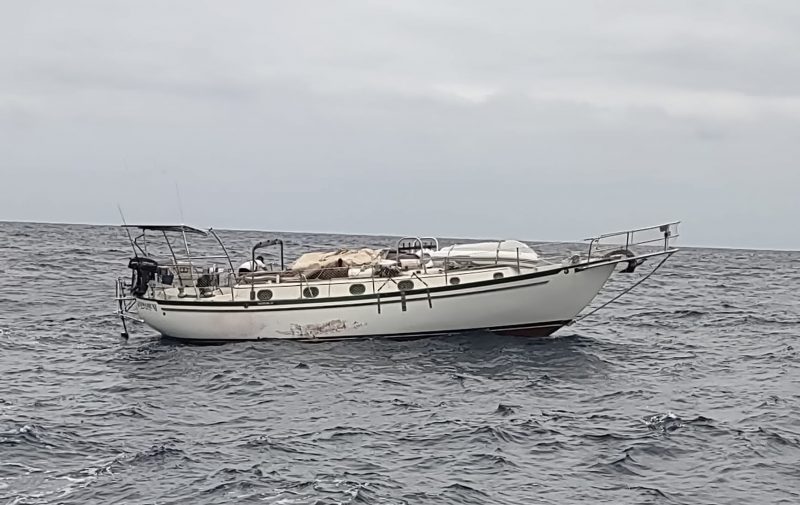
The Stoke of Skateboarding and/or Sailing
For the sailing industry to grow, it must attract younger enthusiasts who can build a brighter future for the sport. There’s an untapped audience that’s likely to love sailing: skateboarders. While sailors and skateboarders may seem worlds apart, the bridge between them is real.
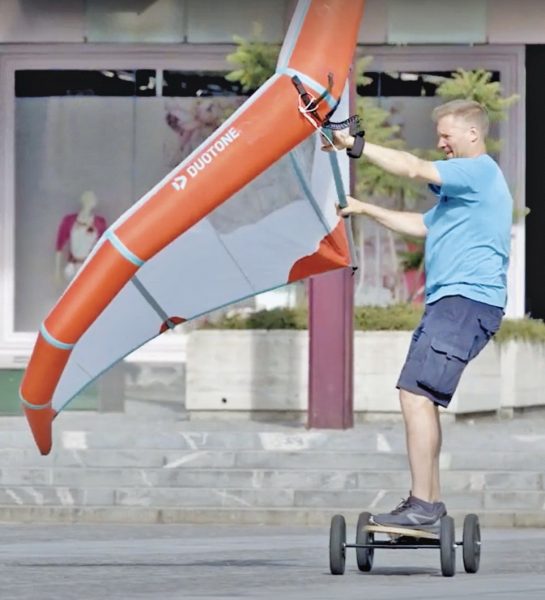
Also inside are all your favorite, regular columns:
- Letters: More Sally Green and Grandfathers; Passing Up Between the Sheets; A Legitimate Point Made on a Quirky Story; and many, many more.
- Sightings: Operation Rescue Lucky Dog; Gerry Brown’s Four Mintakas; and other stories.
- Max Ebb: “Crotchety or the Pits.”
Plus, Changes in Latitudes, Racing Sheet, Loose Lips, and, every sailor’s favorite — Classy Classifieds!
If you’ve subscribed to Latitude 38, you should receive your issue shortly. If you haven’t subscribed, you’re missing out, but you can still pick up your copy from your favorite distributor.
Tiburon’s China Cabin Connection to the Webb Institute
In our recent podcast with local naval architect Jim Antrim, we learned he had been on the sailing team at the Webb Institute in Glen Cove, New York, along with another Bay Area naval architect, Paul Kamen. If you’ve ever done the walk between the San Francisco Yacht Club in Belvedere and the Corinthian Yacht Club in Tiburon, you’ve also walked by another local connection to the famed Webb Institute, the China Cabin. The small cabin on stilts is all that remains of the PS China, a sidewheel steamer rigged for sail and designed and built by William Webb in 1866 to get an early start on globalization, servicing the trade route between San Francisco and the Far East.
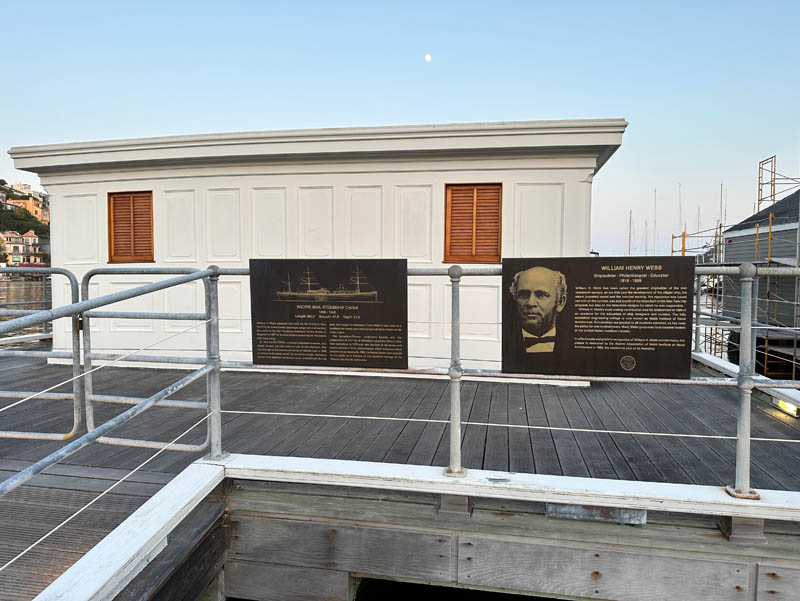
Apparently the ship had a short career because it had a wooden hull. Like your computer operating system, the wooden hull quickly became obsolete, as by 1879, iron-hulled vessels had come into regular use. The PS China finished its service after just 30 round trips between Yokohama and Hong Kong. It was burned for scrap metal in a ship crematorium in Belvedere Cove. This would never be allowed today. What else is “down there?”
Before the ship was burned, the social saloon was removed intact, barged to shore, and set on pilings. Long before reduce-reuse-recycle became a thing and tiny homes became more common, it took on new life as a weekend home. During its 90 years as a residence, locals, who regarded the unique shoreline structure with affection, gave it a new name — the China Cabin.
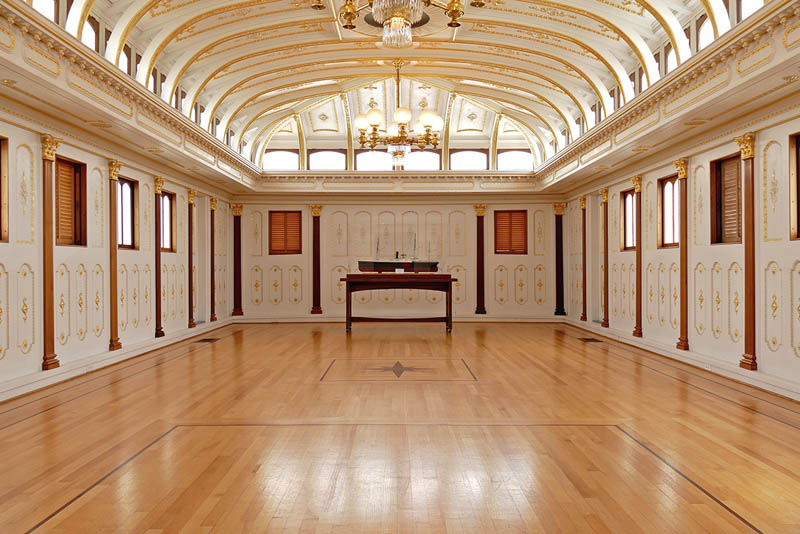
Despite the known rigors of the clipper ship era, there were some well-appointed cabins for officers on board. We suspect they were exporting Cabernet Sauvignon and importing sake. In 1978 the cabin became a National Maritime Monument and was restored by the Belvedere Tiburon Landmark Society.
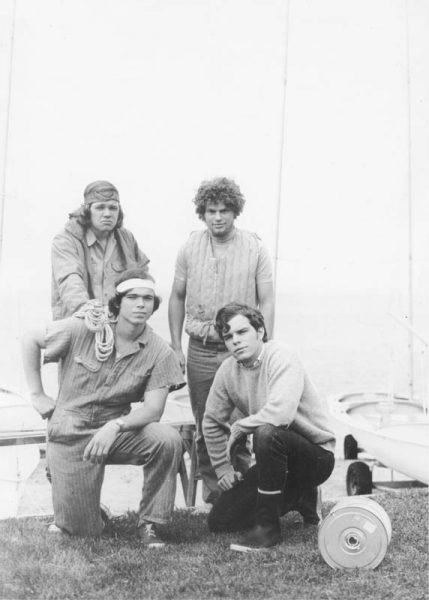
In 1889 William Webb endowed the Webb Institute of naval architecture and engineering, so that more than 100 years after the PS China was built, local naval architects Jim Antrim and Paul Kamen could earn degrees in naval architecture, sail on the Webb Institute sailing team, and have Bay Area careers in naval architecture. They’ve done a lot of sailing, designing, and engineering ever since.
Enjoy Downwind Sailing With Walder Boom Brake
The innovative Walder boom brake — active safety at sea www.boom-brake-walder.com.
Mistress II Masters the Master Mariners Regatta
After the Master Mariners Regatta entries took their competitive tour of San Francisco Bay on Saturday, May 27, the Farallon Clipper Mistress II took home the Farallon Clipper Trophy. The trophy will reside at San Francisco Yacht Club for a year. “We also won Ocean 2, which involved our arch-nemesis, Jim Borger’s Dasher 32 Neja,” said Mistress II’s captain, Richard vonEhrenkrook.
Stephens Brothers built 19 Farallon Clippers (sometimes spelled Farallone Clipper) from 1940 to 1962 in Stockton of mahogany on oak. The yard built Mistress II, hull #11, in 1955. Aldo Alessio had commissioned her. Alessio and Myron Spaulding converted her to a masthead rig. Mistress thus has to give 3 seconds a mile to the fractional-rigged CFs to be eligible to compete for the Farallon Clipper Trophy.
Richard filed this report: “The day started early, with me driving to Sausalito at 6 a.m. to drop off parts for the traveler, then proceeding to Alameda to pick up crew who’d left cars there, then back to Sausalito. Our first duty was to tow our sistership, Jennifer Hinkel’s Ouessant, to the wind line off Yellow Bluff.” Ouessant was awaiting a new diesel re-powering. “Then the crew of the mighty Mistress II got ready to take care of business. There were four Farallon Clippers, an older Mull [Ted Hoppe’s 30-ft Lively Lady], and, starting five minutes prior, our arch-nemesis Neja.”
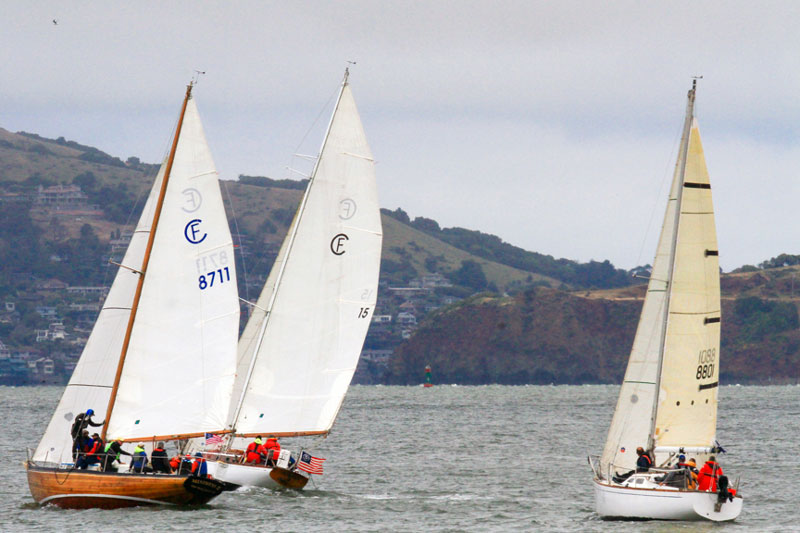
“We had to abandon our perfect set-up for the start at the last moment, as we were between the race committee and the limiting buoy. We came out in a close third, up on the weather hip of Brian Boyd’s Farallon Clipper Hana, which had Ouessant ahead and to leeward. Bill Belmont’s FC Credit came off the line low. Ouessant apparently mistook the Sausalito Entrance Mark for YRA 12 (Little Harding Buoy), and insisted on taking us all up above the layline. We held back and licked our chops, as we quietly raised our spinnaker pole. With about a mile to go, Ouessant realized their mistake. When they and Hana bore off, up went our kite. We easily rolled them down to 12, as they fumbled with their spin gear, ultimately deciding not to set.”
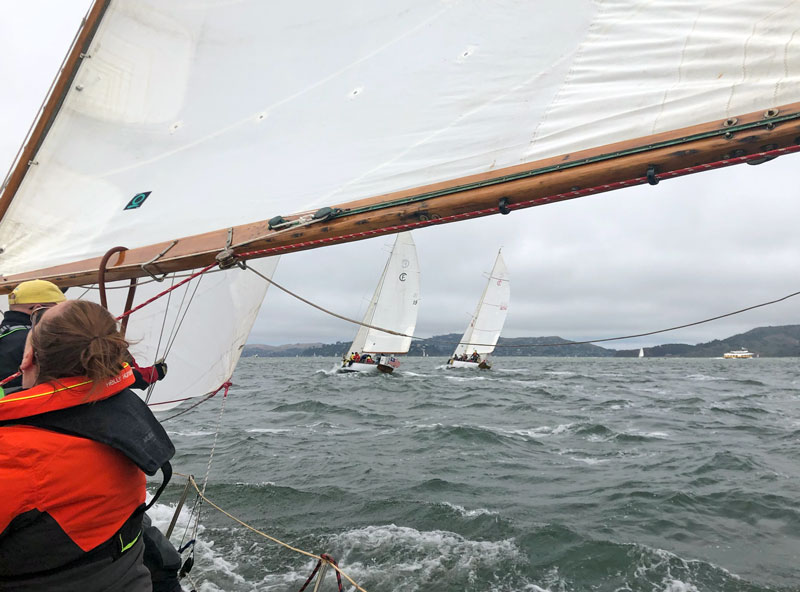
“All four FCs came up toward Yellow Bluff to avoid the flood before heading south to Blackaller in a tight line. Mistress II pulled away, tacking early, intending to do a later consolidation tack, rather than carrying up into the holes that sometimes leave one hanging out to dry under the Marin Headlands. And, that’s what happened.
“These 9.25-ton beasts don’t like holes, and M2 had a half-mile lead going down the Cityfront. The wind was a wiggly true south at Blossom Rock, so we jibed and carried a bit toward YRA 23 [a red-and-white buoy half a mile east of Angel Island], happy that we had rounded inside Neja. It was a good thing. When we finally doused, halfway to 23, the bitter end of the spin halyard skied to the tippy top. There was some discussion of trying to retrieve it. We had foredeck crew capable of a 35-ft climb, but I nixed the idea, not wanting an MOB drill, or worse, resulting from the bravado.
“The advantage of M2’s masthead rig and larger kite would be lost on the last leg. I wasn’t going to risk jumping the sheave in the head by using the jib halyard on a headstay reach. The workup from 23 to Harding Rock was quite blustery, with the firehose effect from burying the rail on a Clipper evident at times.
“With Neja roaring to weather, as she does, we had to be smart, and tacked right at Point Blunt [at the southern tip of Angel Island] for some flood relief, staying inside the usually obvious tide line. Neja and all the FCs but Credit went out toward Alcatraz first and paid the price. We were back to a half-mile lead at Harding, thanks to a perfect one-tack layline call. Though markedly slower wing and wing, we had more than enough separation to take the first toot at Treasure Island.” The race finishes on the east side of Treasure Island.
“The scene at Encinal Yacht Club is a big reason for all to do this event at least once, with beautiful woodies all stacked up together.” Mistress II grilled tenderloin entrées. Ouessant shared lamb and steaks at the club’s docks on the Alameda side of the Estuary.
“The real fun starts after the paid band leaves and the guitars, banjos and fiddles come out. The first set, starting around 11 p.m., was a bit chaotic. But the second set, with Hans List putting down his guitar to pick up a fiddle, me and Brian Boyd on guitar, a talented bassist, and some very nice voices, had many magical moments, finally shutting down around 4 a.m.
“The sail back to Sausalito on Sunday, after towing Ouessant to the west end of the Estuary, was relaxing. My crew drove most of the way home. Back next year for sure!”
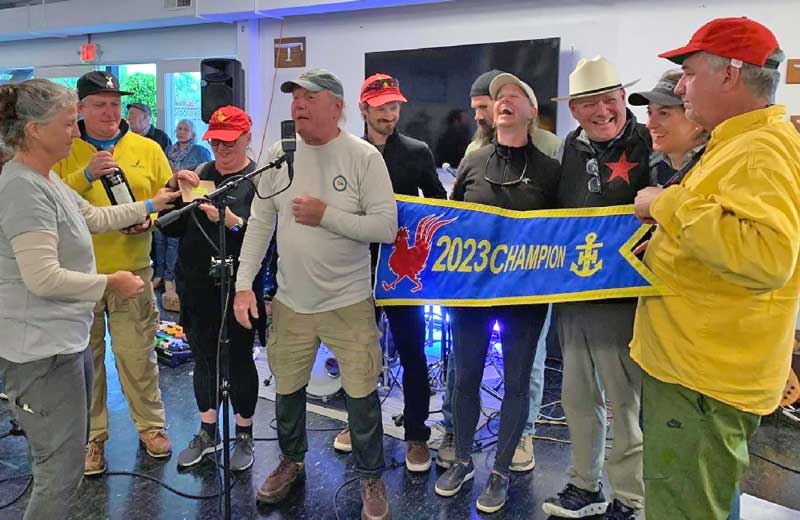
Chris and Aaron Cassell, Dr. Michael Simon, Stephen Buckingham, Shannon Elms, Kris Andersen, Rachel Porter and Vince McPeek crewed on Mistress II in the Master Mariners this year. “On the big boat, it’s a ballet, cuz it takes nine to really race that boat,” says Richard. “One could do it with eight, but you would be lacking hands at certain points. I allow crew to come aboard based on their willingness to learn their position, play their position, and not complain. We do a thorough work-up of the race afterward, where all are equal, and we figure it out for the next one.”
Find complete results of the Master Mariners Regatta here, and look for a feature on the race in the July issue of Latitude 38. The next event for the MMBA will be the Wooden Boat Show at Corinthian YC in Tiburon on Sunday, June 18.
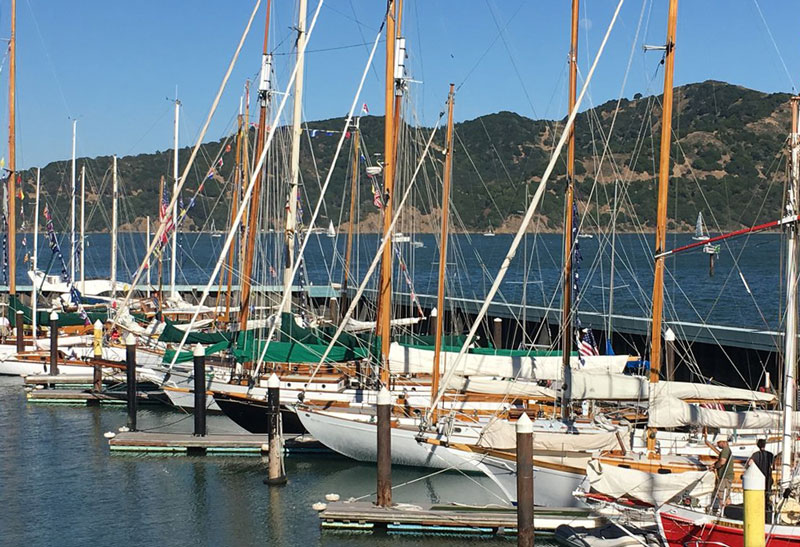
Those interested in the maritime history of Northern California can visit the Haggin Museum in Stockton. It houses a collection of Stephens Bros. documents, photographs and original drawings available to the public.
Friday’s Marvelous and Mysterious Maritime Memories: When Lifelines Fail
Latitude 38 editor John Riise loves delving into maritime history. Here we share a couple of stories he found about sailors who fell off their vessels due to a lifeline failure.
Early one morning during the 1951 Transpac, about 800 miles from Honolulu, 40-year-old Ted Sierks fell overboard off the 73-ft sloop L’Apache when a lifeline broke. The crew threw a life ring he was able to grab, but by the time they got the spinnaker down and the boat turned around, he was nowhere to be seen. The ensuing search included not only a number of yachts in the race that diverted to help, but a Navy aircraft carrier, four destroyers, three destroyer escorts, and a B-17 bomber dispatched from Hickam Field. (At the time it was said to be the largest peacetime search since that for Amelia Earhart in 1937.) No one could find him. Some 30 hours later, just before the search was due to be called off, sharp eyes on the destroyer USS Douglas Munro spotted a blond head. Sierks, who had been in the water for 30 hours and 15 minutes, later said he had seen boats and ships all around him all day, but none came near enough to see him before the Munro.
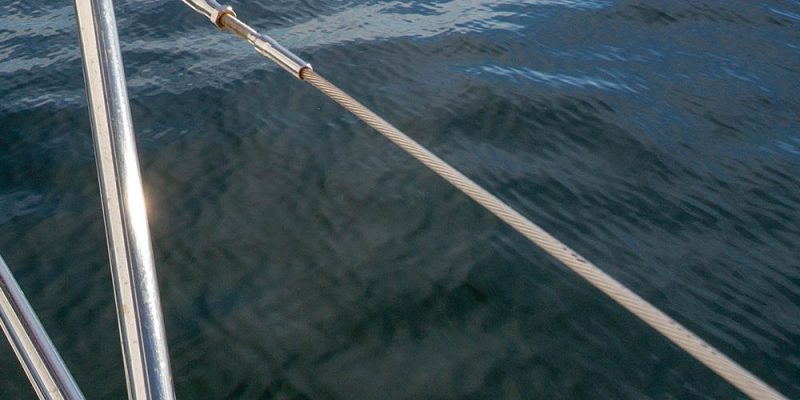
In 1993, 68-year-old singlehander Bill Forrest was headed south off Costa Rica aboard his Capo 30 California Girl. It was a hot, windless day. The boat was under power and an autopilot was steering. To cool off, Bill stripped off his shorts for a bucket shower. As he leaned over to get the first bucketful, the lifeline parted and he went into the water. By the time he came up, the boat was already past him. He grabbed for the trolling line but couldn’t get a firm grip. He decided to let go just as the big, three-barb lure hook embedded itself in his hand. He fought for several minutes before the line broke. Then, treading water, he watched his boat motor over the horizon. Bill ended up swimming 12 miles to the rocky shore. After a day watching recue planes and ships zooming around offshore — with none thinking to look onshore — he decided that he was going to have to save himself. He spent the next week swimming south from small cove to large beach to small cove — eating almost nothing and sleeping little — before he was finally found. Meanwhile, California Girl had struck rocks near his destination harbor, been salvaged, and was on the hard in a boatyard. Before he returned home, Bill went to see her and look at the lifeline, which had just been replaced. He found that the lifeline itself was fine. But, as evidenced by other lifelines on the boat, whoever did the job did not fully engage the circlip that holds the pin in the clevis. So it had worked its way out, causing the pin to fall out, causing the lifeline to “fail.”
Remember to check your lifelines before you head out next!
Westwind Yacht Management — Washing, Waxing and Varnishing
Westwind Yacht Management: Premiere Yacht & Fleet services for the San Francisco Bay Area.

